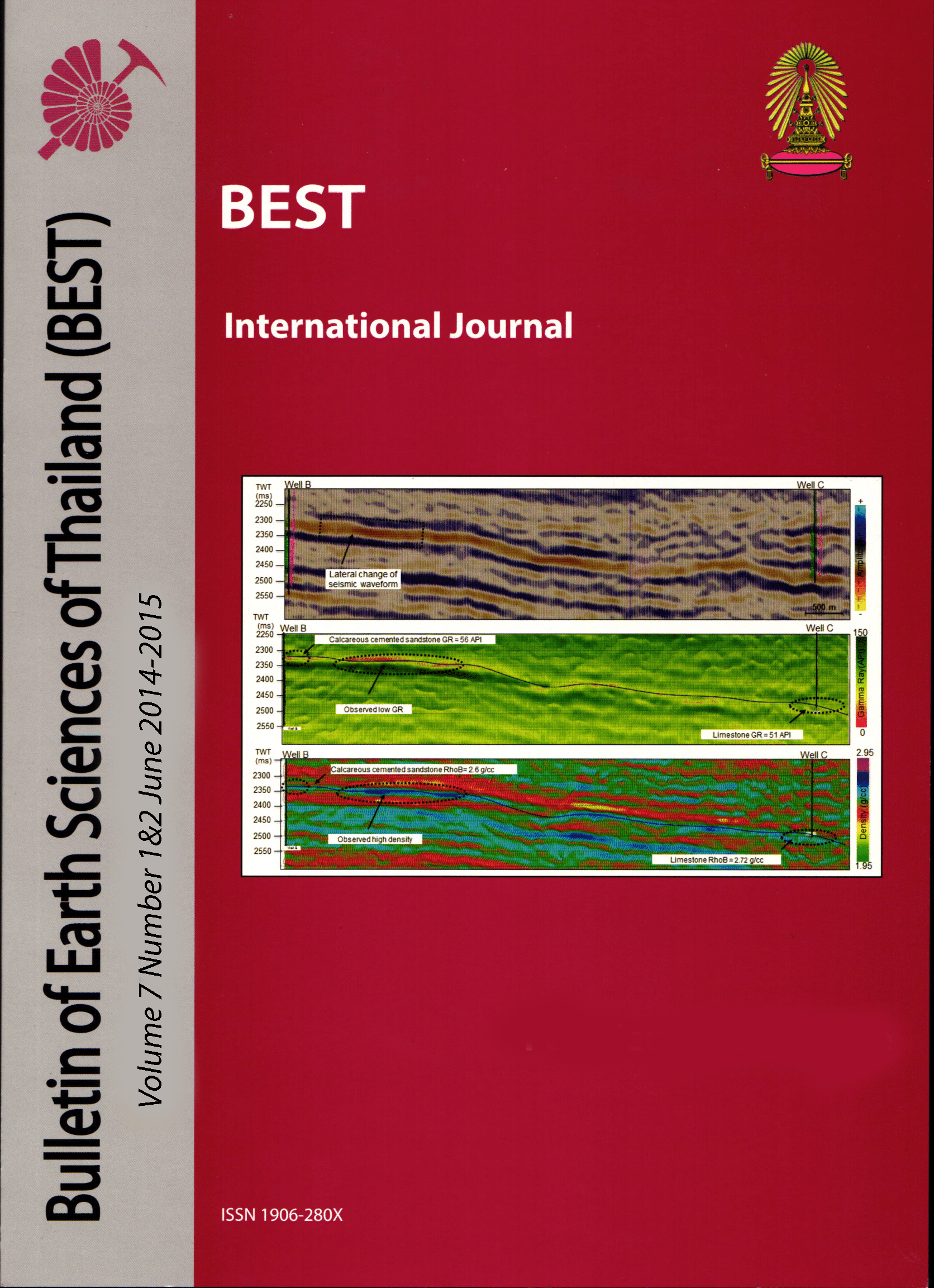Diagenesis and Petrophysical Rock-Type Study of Oligocene Berai Carbonate Platform in “KX-1” Well, CentralKalimantan: Implications for Depositional and Reservoir Models
Main Article Content
Abstract
The “K” Oligocene carbonate platform is located in Upper Kutai Basin, interpreted as an isolated rimmed platform atoll system within a non-reservoir lagoonal environment in the central platform interior. Previous wells were drilled in the eastern rim tested significant volumes of gas. However, the KX-1 well which was drilled to test the western rim of the atoll also discovered gas with a pressure gradient indicating a similar spill point to the eastern rim. Integrated core and wireline log study of the KX-1 exploration well reveals that “K” carbonate platform developed in a land-attached setting in a semi-enclosed embayment without raised rims, under oligophotic conditions, related to encroaching clastic influx points from the North and Southwest. Interlayered reservoir-quality grainstone and packstone units developed across the platform interior as sand shoals with significant lateral extents, suggesting pressure communication in the saddle area between the rimmed margins. Economic porosity is present with average of 5.5%, as secondary porosity generated by: (1) matrix-specific intercrystalline microfractures, and (2) microporosity via non-fabric selective burial leaching and dolomite replacement. Isotope signatures of uplift may relate to tectonically induced microfractures that are associated with burial leaching and dolomite replacement in the platform interior. The microfractures are a response to funneling and leaching fluid pathways
connected to the platform margin through a continuous permeability zone. These findings open up a new exploration and development paradigm by identifying new elements as target criteria in Oligocene carbonate platform : (1) Layered grainstone units with extensive lateral continuity in the
platform interior setting, (2) Structural overprints that can create combination traps, thus extending the play-type target from what was previously a strict “reefal build-up” poro-perm model.
Article Details

This work is licensed under a Creative Commons Attribution-NonCommercial-NoDerivatives 4.0 International License.
Copyright © 2008 Department of Geology, Faculty of Science, Chulalongkorn University. Parts of an article can be photocopied or reproduced without prior written permission from the author(s), but due acknowledgments should be stated or cited accordingly.
References
Longman, M., 1993, Future bright for Tertiary carbonate reservoirs in Southeast Asia: Oil and Gas Journal (United States), v. 91.
Lucia, F. J., 1995, Rock-fabric/petrophysical classification of carbonate pore space for reservoir characterization: AAPG bulletin, v. 79, p. 1275-1300.
Riding, R., 2002, Structure and composition of organic reefs and carbonate mud mounds: concepts and categories: Earth-Science Reviews, v. 58, p. 163-231.
Saller, A., R. Armin, L. O. Ichram, and C. Glenn-Sullivan, 1993, Sequence stratigraphy of aggrading and backstepping carbonate shelves, Oligocene, Central Kalimantan, Indonesia: Memoirs – American Association of Petroleum Geologist, p. 267-267.
Saller, A., and S. Vijaya, 2002, Depositional and diagenetic history of the Kerendan carbonate platform, Oligocene, central Kalimantan, Indonesia : Journal of Petroleum Geology, v. 25, p. 123.
Wilson, M., and A. Vecsei, 2005, The apparent paradox of abundant foramol facies in low latitudes: their environmental significance and effect on platform development : EarthScience Reviews, v. 69, p. 133-168.
Witts, D., R. Hall, G. Nichols, and R. Morley, 2012, A new depositional and provenance model for the Tanjung Formation, Barito Basin, SE Kalimantan, Indonesia : Journal of Asian Earth Sciences, v. 56, p. 77-104.
Zachos, J. C., T. M. Quinn, and K. A. Salamy, 1996, High-resolution (104 years) deep-sea foraminiferal stable isotope records of the Eocene-Oligocene climate transition : Paleoceanography, v. 11, p. 251-266.


